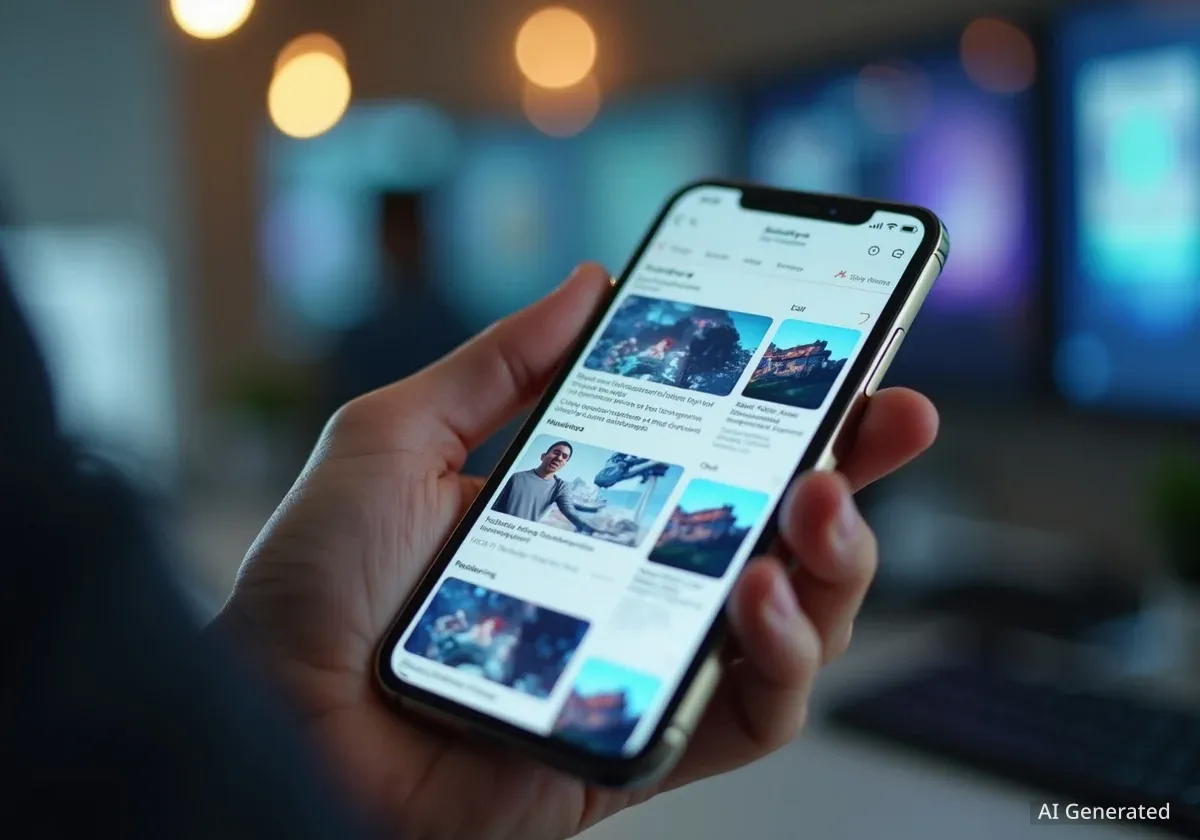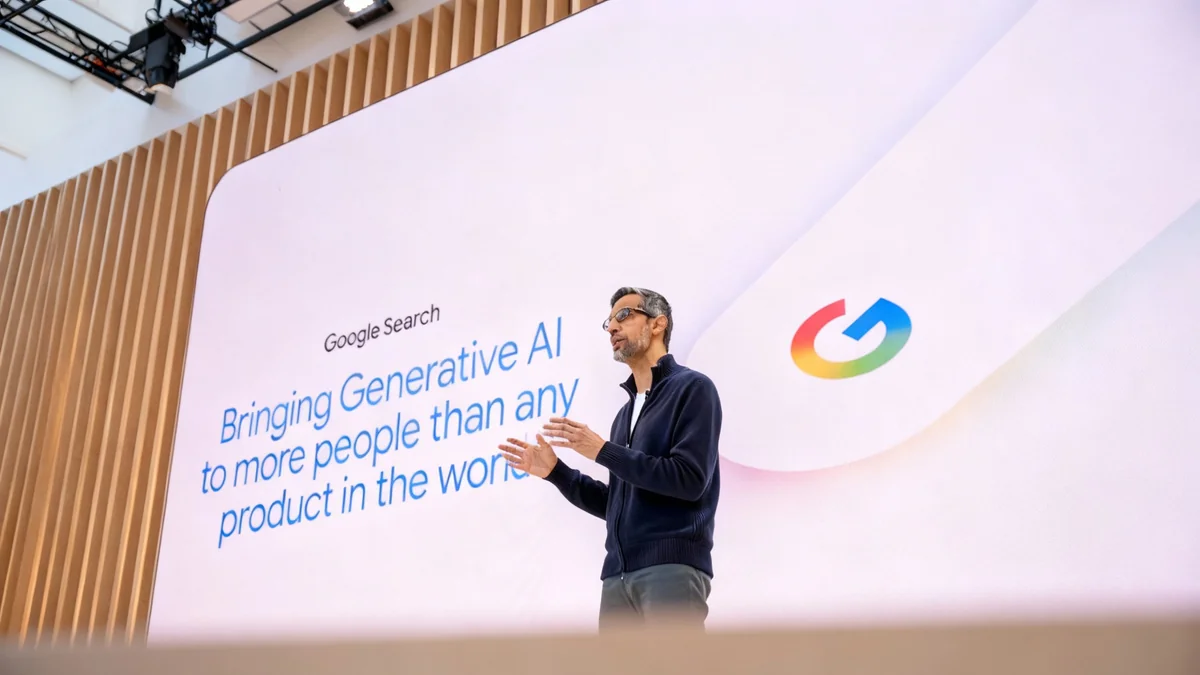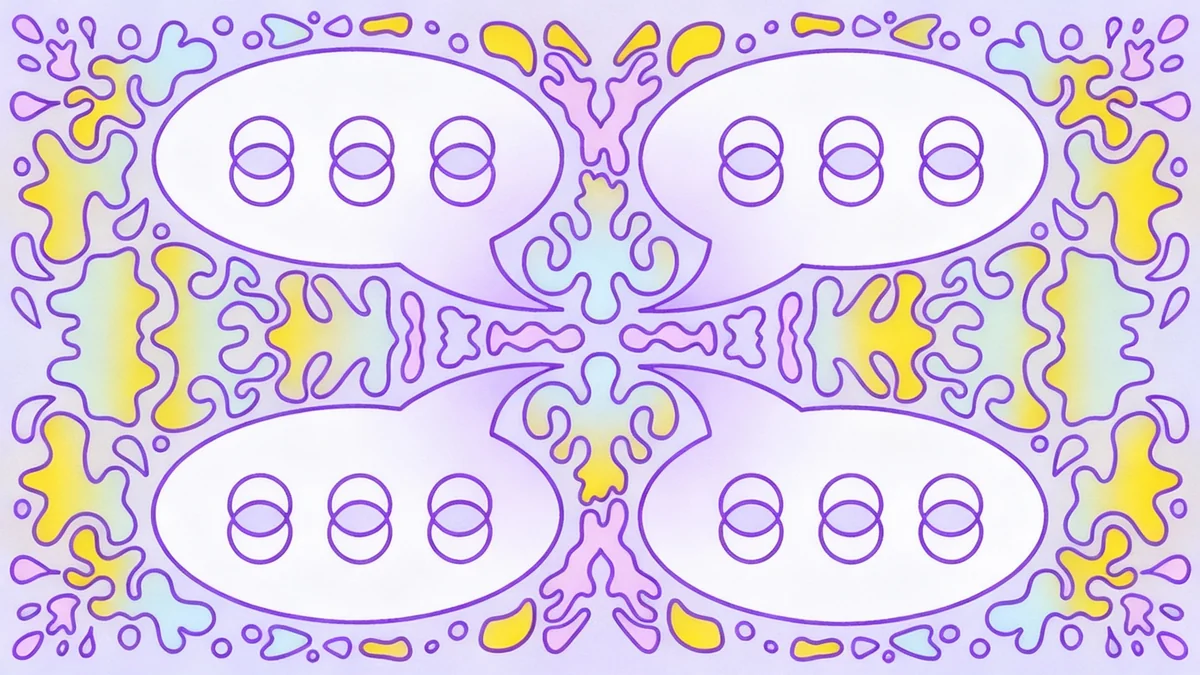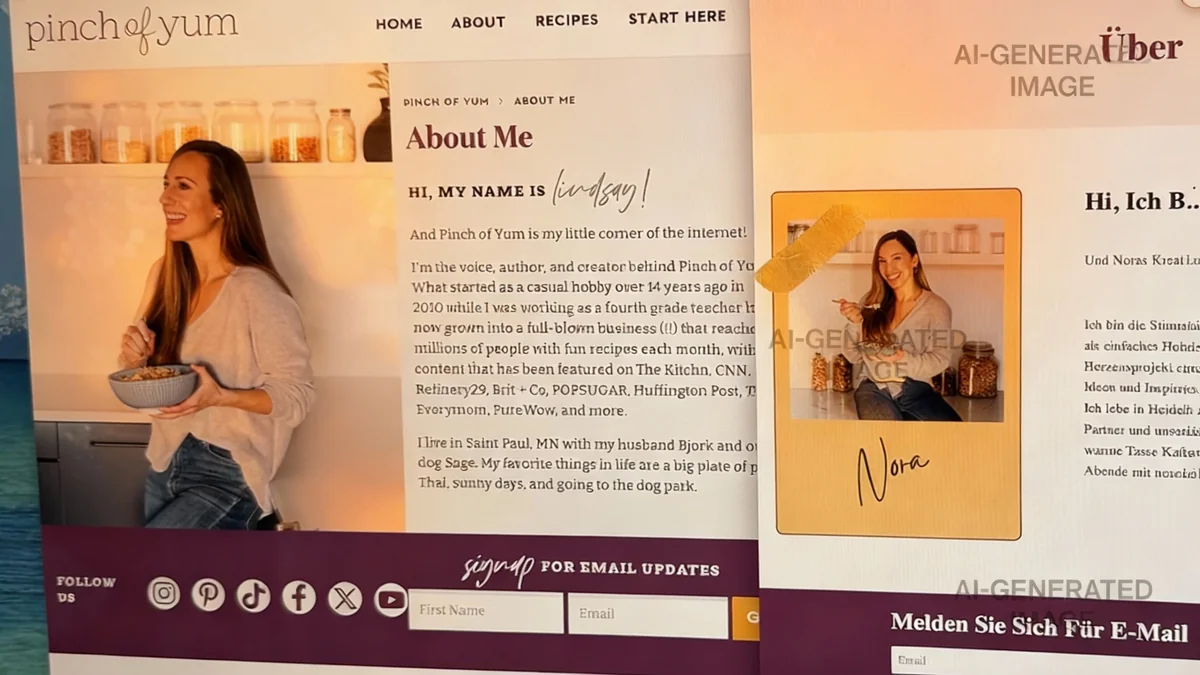Google appears to be experimenting with a significant redesign for its Gemini artificial intelligence application on Android. Evidence discovered within the app's code suggests a potential shift from its current chatbot-style interface to a more visually engaging, scrollable feed designed to inspire users with creative prompts.
The experimental interface, which is not yet available to the public, was uncovered by the publication Android Authority through a technical analysis of a recent version of the Gemini app. This potential update would position Gemini as a more visually-driven tool, a move that could help it compete in an increasingly crowded market for AI applications.
Key Takeaways
- Google is internally testing a new user interface for its Gemini AI app on Android.
- The proposed design replaces the standard chat screen with a scrollable, image-rich feed of suggested prompts.
- This change was discovered within the app's code and has not been publicly released or officially announced.
- The redesign aims to make the app more visually appealing and guide users on how to leverage Gemini's capabilities.
A Shift from Conversation to Inspiration
The current version of the Google Gemini app presents users with a familiar interface, similar to a standard messaging application. It opens to a screen where users type their queries or commands into a text box, much like a traditional chatbot.
The experimental design represents a fundamental change in this user experience. Instead of a blank slate, users would be greeted with a dynamic, scrollable feed. This feed would feature suggested prompts accompanied by eye-catching photos and colorful backgrounds, intended to showcase the diverse capabilities of the AI model.
Redesigned Home Screen Layout
According to the findings, the new home screen would reorganize key functions for better visibility. Shortcut buttons for specific tasks, such as “Create Image” or accessing “Deep Research,” would be moved to a more prominent position at the top of the screen. Below these shortcuts, the scrollable feed of suggestions would begin.
This layout prioritizes discovery and inspiration over the simple question-and-answer format. It aims to reduce the friction for new users who may be unsure of what to ask an advanced AI, guiding them with concrete examples of what is possible.
Background on Gemini
Gemini is Google's family of multimodal AI models, capable of understanding and processing text, images, audio, and video. The Gemini app was launched to provide mobile users with direct access to these capabilities, competing with other popular AI tools like OpenAI's ChatGPT.
Examples of New User Prompts
The analysis of the app's code revealed several examples of the types of prompts Google is testing for the new feed. These suggestions cover a wide range of creative and practical uses, demonstrating the model's versatility.
Many of the prompts are focused on image generation and manipulation, encouraging users to engage with Gemini's visual features. Examples include:
- “Teleport me to deep space”
- “Give me a vintage or grunge look”
- “Turn my drawing into a storybook”
Other prompts highlighted different use cases for the AI, such as productivity and information gathering. These were often presented with colorful backgrounds rather than specific images. Examples of these suggestions include “Brainstorm out loud with Live” and “Send me a daily news roundup.”
Official Company Response
When asked for a comment on the potential redesign, a Google spokesperson stated that the company had no announcement to make “just yet.” This response suggests that the feature is still in an experimental phase and its public release is not confirmed.
Strategic Implications in the AI Market
This potential redesign of the Gemini app can be seen as a strategic move to differentiate it from competitors. While OpenAI’s ChatGPT maintains a minimalist, text-focused interface, a more visual Gemini could appeal to a broader audience that responds well to graphical content and guided experiences.
By providing users with a feed of ideas, Google could significantly increase user engagement and encourage more frequent use of the app. It transforms the tool from a passive assistant waiting for commands into an active source of inspiration.
Competing for User Attention
The mobile app market is highly competitive. The original report noted that the Gemini app saw a surge in popularity in September after the integration of Google's Nano Banana AI image model, reaching the top of the U.S. App Store charts. However, it was later displaced by OpenAI's video generation app, Sora.
The goal appears to be inspiring users with specific suggestions on how to use Gemini’s AI, rather than leaving them to figure out the AI chatbot’s capabilities on their own.
A more visually appealing and user-friendly interface could be a key factor in attracting and retaining users in the long term. It addresses a common challenge with advanced AI tools: many potential users are not aware of the full extent of their capabilities and therefore do not use them to their full potential.
If this visually-focused feed is ultimately rolled out to the public, it would mark a significant evolution in how Google presents its flagship AI product to consumers. The focus would shift from raw capability to a more curated and accessible user experience, potentially setting a new standard for mobile AI applications.





